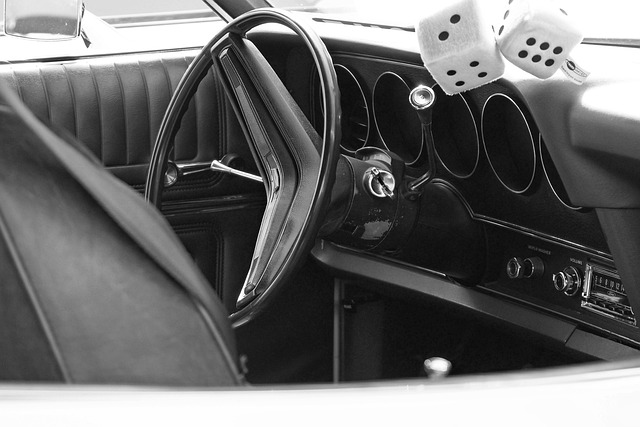Looking to register your car in California? This comprehensive guide walks you through every step, from understanding eligibility requirements to obtaining your California registration plate. We’ll highlight the importance of gathering necessary documents and explain how to conduct a DMV VIN verification efficiently. By following these straightforward steps, you’ll be on your way to legal California car registration in no time. Don’t forget to bring your dmv vin verifier for a smooth process.
- Eligibility Requirements for Car Registration in California
- Gather Necessary Documents for Vehicle Registration
- Visit the DMV and Conduct a Vehicle Identification Number (VIN) Verification
- Complete the Registration Process at the DMV
- Obtain Your California Registration Plate and Document Storage
Eligibility Requirements for Car Registration in California

To register a car in California, you must meet certain eligibility requirements set by the Department of Motor Vehicles (DMV). One crucial aspect is ensuring your vehicle meets all safety and emissions standards. All vehicles, regardless of age or model, must pass an inspection conducted at an approved DMV location or through a mobile vin inspection service, using a reliable dmv vin verifier to check for any outstanding issues or recalls.
Additionally, the owner of the vehicle must be a California resident and have a valid driver’s license. The car must also have a valid registration from another state, or if it’s a new purchase, proof of purchase and a bill of sale. Using a mobile vin verification service can help streamline this process by providing quick and accurate information on the vehicle’s history, including any accidents or outstanding loans.
Gather Necessary Documents for Vehicle Registration

Before you start the registration process, make sure to gather all the essential documents required by the California Department of Motor Vehicles (DMV). This includes your vehicle’s title, proof of insurance, and a valid driver’s license. The DMV also mandates a Vehicle Identification Number (VIN) inspection for every car, which can be conveniently conducted using a mobile VIN verifier. This digital tool verifies the vehicle’s history and checks for any outstanding issues or recalls, ensuring that your registration is smooth and accurate.
Additionally, have your odometer reading ready as it’s a critical piece of information during the registration. These documents are crucial steps in the registration process, ensuring that your car meets all legal standards before being authorized to drive on California’s roads.
Visit the DMV and Conduct a Vehicle Identification Number (VIN) Verification

Once you’ve gathered all the necessary documents and completed the registration application, it’s time to conduct a crucial step in the process—a Vehicle Identification Number (VIN) verification at your local DMV. This is an essential part of car registration in California, ensuring the accuracy of your vehicle’s details. Bring your car along, or have it towed if needed, to the designated DMV office for this critical inspection.
A mobile VIN verifier can also be used as an alternative, providing a convenient and efficient way to complete the verification process. This service allows you to obtain a vin inspection outside of traditional DMV hours, offering flexibility and saving you time. However, ensuring the legitimacy and accuracy of the mobile vin verification is paramount, so choose a reputable service provider for peace of mind.
Complete the Registration Process at the DMV

After gathering all necessary documents, it’s time to complete the registration process at your local DMV (Department of Motor Vehicles). This step involves verifying the vehicle’s identification number (VIN) to ensure its authenticity and history. You can opt for a traditional vin inspection or utilize modern convenience with a mobile vin verifier, which allows you to check the VIN digitally.
At the DMV, you’ll be guided through the process where a representative will cross-reference the provided information against their records. This includes verifying the VIN using advanced tools, such as those offered by many mobile vin verification services, ensuring your car’s history is accurate and free from any discrepancies. By completing this step, you’ll not only register your vehicle but also gain peace of mind knowing its past is transparent.
Obtain Your California Registration Plate and Document Storage

After completing your vehicle’s registration application at the California DMV (Department of Motor Vehicles), it’s time to obtain your new California registration plate and ensure proper document storage. The process typically involves a few key steps. First, you’ll need to request a license plate from the DMV. This can often be done online or in person. Once approved, you’ll receive your new plates, which should display a unique California Vehicle Identification Number (VIN) along with other necessary details.
Additionally, it’s crucial to keep your vehicle’s registration documents secure and readily accessible. This includes not only the physical registration card but also any proof of insurance and vehicle inspection records. While the DMV offers convenient online services for many tasks, some vehicles may require a mobile VIN verification or inspection before registration can be finalized. Ensure you’re prepared with all necessary documentation to streamline the registration process.
Registering your car in California is a straightforward process once you meet the eligibility requirements and gather the necessary documents. By visiting a DMV office and undergoing a simple VIN verification, you can complete the registration process efficiently. Remember to obtain your California registration plate and keep your documentation up-to-date for smooth sailing on California’s roads. Ensure compliance with local regulations by utilizing reliable DMV vin verifier services to make the experience hassle-free.
